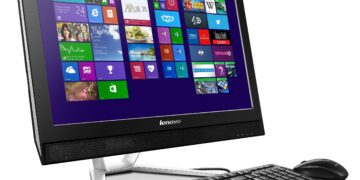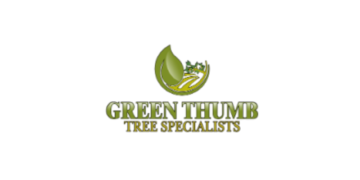With environmental issues have become more pressing, businesses have had to rethink their approach to packaging and look for ways to reduce their carbon footprint. In recent years, sustainable packaging innovations have become increasingly popular in the food industry. Not only are the materials used in sustainable packaging more environmentally friendly than traditional plastics and styrofoam, but they also often provide better insulation and more convenience for consumers. Sustainable packaging reduces the waste that ends in landfills each year and can also help reduce energy use throughout the food production process.
Eco-friendly packaging is more than just a trend; it is an essential component of sustainability in the modern age. Not only does sustainable packaging help to reduce environmental impacts, but it also minimizes the costs for businesses. Ideal sustainable packaging solutions can help food businesses meet global sustainability goals and promote responsible consumption by reducing their carbon footprint and contributing to a circular economy. Now let us look at the top 6 trends in Sustainable Packaging Innovations in the food industry.
What is Sustainable Packaging:
Sustainable packaging is a concept that focuses on reducing waste and the environmental impact of packaging materials. It involves looking for ways to reduce the consumption of resources and minimize waste throughout the packaging process. It includes everything from design, production, transportation, storage, and disposal of products. The prime focus of sustainable packaging is to increase efficiency while safeguarding the products during shipping and handling. With this approach, manufacturers can ensure product quality while being conscious of their environmental footprint. With the global population expected to reach 9.7 billion by 2050, we must start making changes now to ensure sustainable practices in the future.
This article will take an in-depth look into the top sustainable trends in food packaging that are currently in use by companies around the world.
v Recyclable and Biodegradable Food Packaging
Recyclable and biodegradable packaging has become increasingly popular in recent years as more and more people recognize the importance of sustainability. This packaging material uses easily broken down by the environment, reducing its impact on the planet. For businesses in the food industry looking to reduce their environmental footprint and appeal to eco-conscious consumers, recyclable and biodegradable packaging is an ideal choice.
Unlike many traditional forms of plastic packaging, which can take hundreds of years to break down in landfills, recyclable and biodegradable packaging requires renewable resources like plant fibers, composted food waste, and other organic materials. As a result, it creates less pollution than conventional plastic or Styrofoam containers that cannot be recycled or composted. This material is harmless to the environment and reduces business costs since it requires less energy for production. Additionally, this type of packaging usually features attractive designs that appeal to customers and stand out on store shelves.
Example:
KFC recently announced a massive overhaul of its packaging designs. They have introduced sustainable new containers made from recyclable and compostable materials as part of their commitment to sustainability. The new containers get their design to reduce the company’s environmental footprint while reducing customer expenses.
The new design features two types of containers: one with a lid and one without it. The lidless container gets its structure from pulp-based paperboard, which is both recyclable and compostable. The lidded container gets its design from Polyethylene terephthalate (PET). This material can be easily recycled and reused in various industries such as automotive, electronics, toys, cosmetics, construction, and many more.
This innovative approach to packaging will help KFC reduce its carbon footprint by using fewer resources for production and waste disposal.
v Intelligent Sustainable Food Packaging
Intelligent sustainable food packaging transforms how we buy, store, and consume food. This innovative packaging offers several benefits that could revolutionize how we eat, shop for groceries, and dispose of our waste. By leveraging advanced technologies such as RFID tracking and sensors, intelligent packaging gives consumers unprecedented visibility of products. It empowers them to make more informed decisions about what they eat.
Intelligent food packaging has numerous use cases that benefit consumers and manufacturers alike. This new breed of packaging helps consumers identify expiration dates and track their purchases. It also helps monitor product temperature during shipping and storage, alerting retailers of potential issues that could arise before it reaches their shelves. Additionally, the data collected by these intelligent packages can provide invaluable insights into consumer behavior that helps better forecast demand and planning production cycles accordingly. In short, this technology has the potential to revolutionize how we produce, purchase, and enjoy food on a global scale.
v Augmented Reality Food Packaging
Augmented Reality is considered a feature of food packaging. This ground-breaking technology can revolutionize how people shop for groceries, offering a more interactive and informative experience. Augmented reality food packaging aims to support customers with the ability to explore product details virtually. They no longer need direct interaction with the product.
Using cutting-edge technology, this innovative form of packaging uses a two-dimensional barcode or QR code. When scanned by a mobile device, it launches an augmented reality experience that overlays additional information about the product onto a smartphone or tablet device. Customers can then view videos, recipes, and nutritional facts and get access to exclusive offers and discounts right at their fingertips. With interactive packaging, shoppers can have more control over their buying decisions, whereas manufacturers benefit from higher brand engagement rates.
Example:
Companies such as Coca-Cola, PepsiCo, Nestle, and Kraft have all implemented augmented reality initiatives to bring more excitement and value to customers buying their products. For instance, PepsiCo launched a campaign allowing consumers to scan their bottles with mobile phones to unlock exclusive content like music videos or virtual snacks.
v Simple Packaging Designs
Food packaging is a crucial element of the marketing and branding of any product. Using simple food packaging designs can help to create an eye-catching, memorable look that resonates with customers. For food products that are trying to stand out on store shelves or online markets, it’s crucial to choose a design that is both visually appealing and appropriate for the product itself. However, with the rising environmental concerns, there is a need for sustainable food packaging designs that are eco-friendly and can replace traditional packing materials.
Fortunately, designers have responded to these challenges using creative thinking and developed many simple yet effective solutions for sustainable food packaging designs. These include using biodegradable materials such as paper or plant-based plastics for packing. They also use renewable energy sources like solar power or wind energy to design the packages, recycle existing products into new ones instead of throwing them away, and develop reusable and recyclable materials after use. With these innovative ideas, companies can reduce their carbon footprint while providing consumers with reliable and safe food packaging solutions.
v Flexible Food Packaging
Flexible food packaging is becoming increasingly popular as a sustainable and inexpensive way to store and transport food. With single-use plastics becoming more controversial, companies are looking for alternatives, affordable and good for the environment. Not only does flexible packaging offer convenience, but it also helps reduce waste by providing a reusable option for storing perishable items like produce. Consumers can easily reseal the package after use to keep foods fresher longer, which helps reduce spoilage and wasted food. Additionally, flexible packaging is recyclable, so it won’t take up additional landfill space once disposed of properly.
Flexible packaging offers many benefits over traditional packaging types such as cans, bottles, and cartons. It uses less material than rigid options, which makes them cheaper to produce and easier to ship. Additionally, flexible food pouches can be designed in different shapes and sizes and adapted to fit the exact portion sizes needed. They also require no additional labeling or tamper-evident seals, thus saving time on production lines. In addition to being cost-effective, flexible packages offer superior protection against moisture, oxygen, light, odors, gases, and microorganisms compared with other forms of packaging.
Example:
Huhtamaki, a leading global provider of packaging solutions, has unveiled its latest innovation in fiber packaging. This new design offers an eco-friendly solution to the growing environmental concerns surrounding plastic packaging materials.
The innovative nature of Huhtamaki’s fiber-based design lies in using natural fibers that can be recycled or composted after use. Unlike traditional plastics that are difficult to recycle and often end up in landfills, this new packaging material provides an alternative that is both sustainable and cost-effective. The fibers used are sourced from responsibly managed forests and plantations, helping to reduce carbon emissions associated with plastic production processes. Additionally, the resulting product is lightweight and requires less energy for shipping, unlike other packaging materials.
v Fewer Unnecessary Parts
Food packaging is becoming more of a consideration in terms of sustainability. Companies are striving to reduce the number of unnecessary parts used in their food packaging to aid their efforts to become more eco-friendly and reduce their environmental footprint.
Using fewer unnecessary parts in food packaging reduces waste and help create cost savings for companies. By reducing the number of materials used, manufacturers can decrease production costs while still maintaining safety standards and protecting the quality of their products. In addition, using fewer materials can lead to simple disposal or recycling options for consumers looking for ways to be environmentally conscious with their purchases.
With an increasing focus on creating sustainable practices, many companies have already taken steps toward reducing the amount of plastic and other materials used in food packaging by testing out new designs that require fewer components.
Conclusion:
In conclusion, the food industry has made great strides in sustainable packaging innovations. Although there is still much more work to be done, these six examples highlight some of the most significant advancements in sustainable packaging that have got a lot of hype in the present time. With the collective effort of manufacturers, retailers, and consumers worldwide, it is possible to reduce the amount of non-biodegradable plastic waste entering our environment. As more companies embrace sustainable packaging initiatives, the food industry will continue to move towards a more sustainable future.
For More info Visit: https://www.huhtamaki.com/en/sustainability/



















